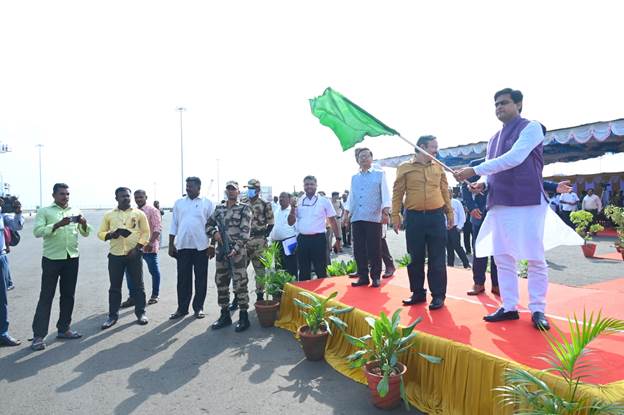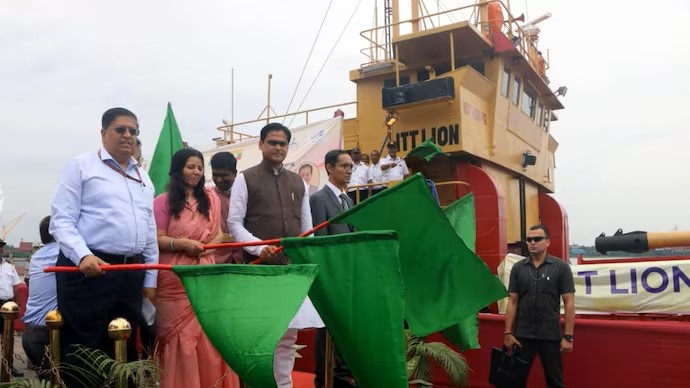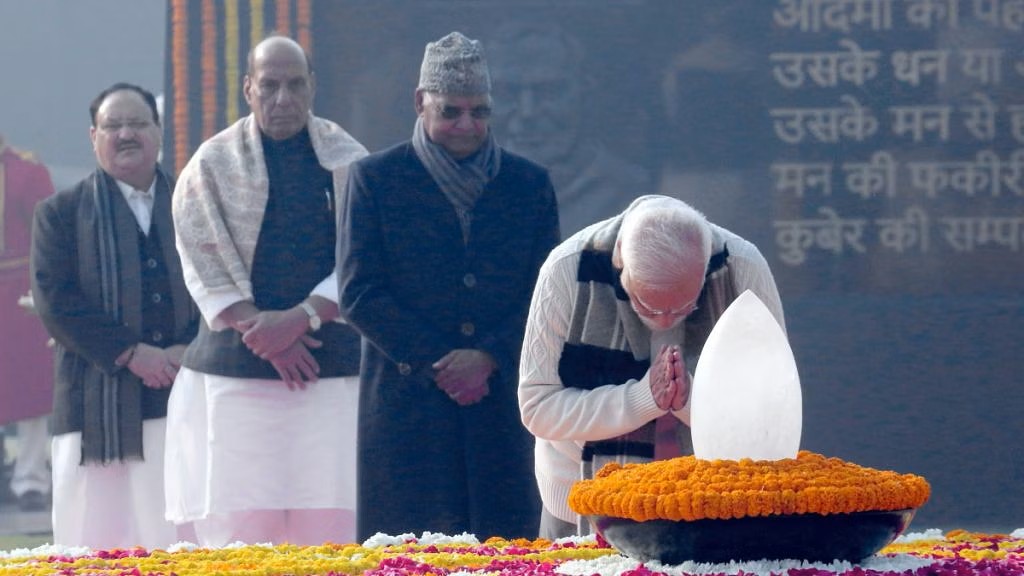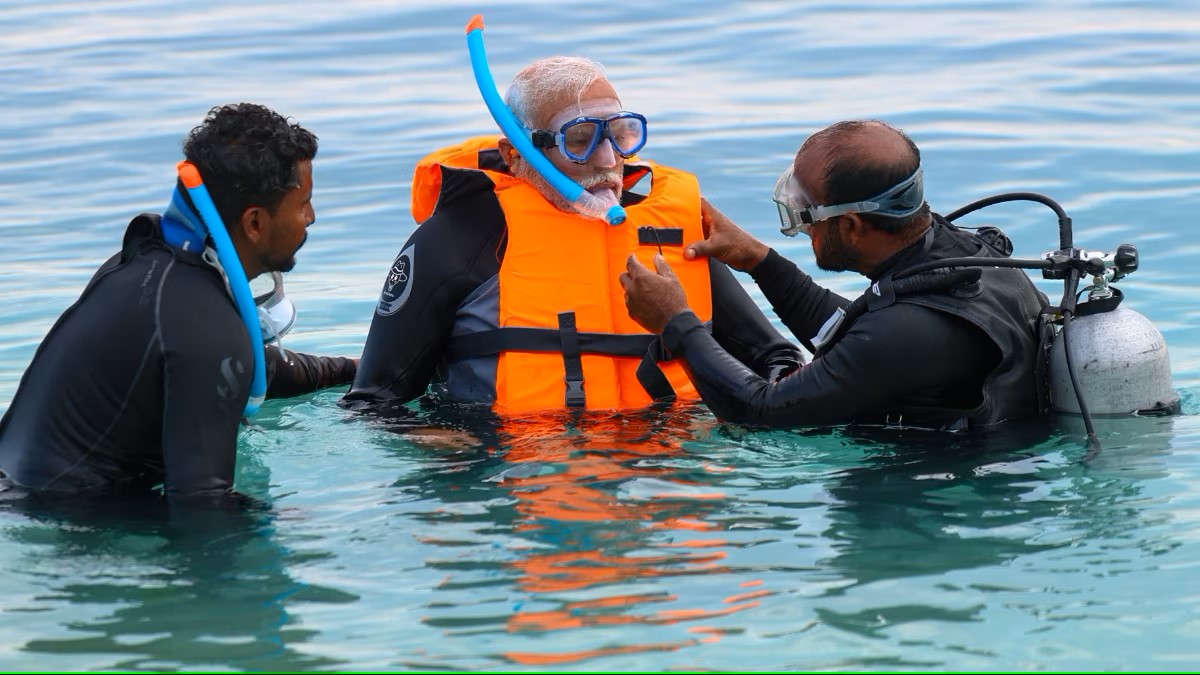The first rays of dawn on February 12th, 2024, will illuminate not just the Ganges, but a landmark moment in Indo-Bangladeshi relations. The maiden voyage of cargo vessels between Maia Port in India and Sultanganj Port in Bangladesh marks a momentous occasion, that transcends mere economic transactions and ripples outwards, shaping the future of regional cooperation and sustainability.
 Imagine slicing a journey by nearly 1,000 kilometres. This is the transformative power of the new IBP route via Aricha. This isn’t just a statistic; it’s a revolution in efficiency, translating to millions saved, swifter deliveries, and a boon for the environment. An estimated 2.6 million tonnes of cargo annually, shifting from congested roads to serene waterways, paints a picture of win-win partnerships and shared prosperity.
Imagine slicing a journey by nearly 1,000 kilometres. This is the transformative power of the new IBP route via Aricha. This isn’t just a statistic; it’s a revolution in efficiency, translating to millions saved, swifter deliveries, and a boon for the environment. An estimated 2.6 million tonnes of cargo annually, shifting from congested roads to serene waterways, paints a picture of win-win partnerships and shared prosperity.
This inaugural voyage resonates far beyond commerce. It signifies the successful implementation of the Protocol on Inland Water Transit and Trade (PIWTT) routes 5 & 6, a testament to the collaborative spirit fostered during the 2022 visit of Bangladesh Prime Minister Sheikh Hasina. This initiative transcends trade agreements, signifying a deeper commitment to regional integration, cultural exchange, and building bridges of trust.
As the world navigates the choppy waters of climate change, this shift to waterways offers a welcome sail towards a sustainable future. India and Bangladesh set a commendable example by embracing cleaner, more fuel-efficient transportation. Reduced carbon emissions and minimized pollution pave the way for a healthier environment and a more resilient regional ecosystem.
The February 12th voyage is not just a historical footnote; it’s a melody composed of collaboration, innovation, and shared aspirations. As trade flourishes, partnerships solidify, and communities connect, this initiative promises a harmonious symphony of shared progress for both nations. Imagine bustling river ports echoing with activity, local businesses thriving on efficient trade routes, and communities forging connections across borders. This is the future that unfolds as India and Bangladesh navigate the Ganges together.
This momentous event is but the first chapter in a captivating story. Stay tuned for the sequel, as the inaugural voyage unfolds its impact on the region’s economic and social landscape. Witness the power of cooperation as two nations, hand-in-hand, chart a course towards a brighter, more sustainable future, where the Ganges flows not just as a waterway, but as a symbol of shared prosperity and progress.




